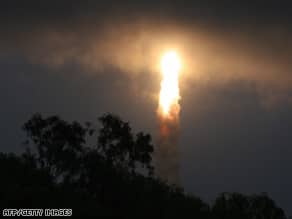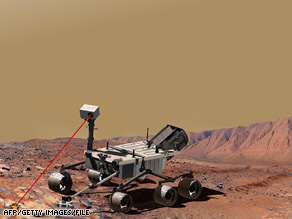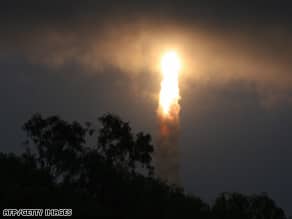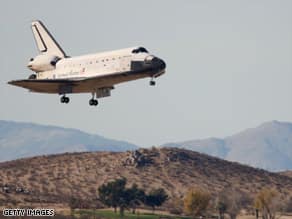NEW DELHI, India (CNN) — Scientists have switched off several on-board instruments to halt rising temperatures inside India’s first unmanned lunar spacecraft. The spacecraft carrying India’s first lunar probe, Chandrayaan-1, lifts off
NEW DELHI, India (CNN) — Scientists have switched off several on-board instruments to halt rising temperatures inside India’s first unmanned lunar spacecraft.
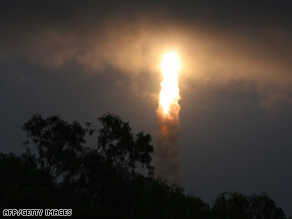
The spacecraft carrying India’s first lunar probe, Chandrayaan-1, lifts off from Sriharikota.
Mylswamy Annadurai, the project director for the lunar mission, told CNN that temperatures onboard Chandrayaan-1 had risen to 49 degrees Celsius (120 degrees Fahrenheit).
The increase occurred as the craft, the moon — which it is orbiting — and the sun lined up, a phenomenon which Annadurai said was not unexpected and which would likely last until the end of December.
“We have switched off the systems (aboard) that are not needed to be on,” Annadurai said, ruling out the possibility of damage and adding that the temperature was now down to 40 degrees Celsius (104 degrees Fahrenheit).
Heat on board the Chandrayaan-1 should not exceed 50 degrees Celsius (122 degrees Fahrenheit), Annadurai said — but insisted the orbiter is designed to withstand up to 60 degrees Celsius (140 degrees Fahrenheit).
The Chandrayaan-1 — Chandrayaan means “moon craft” in Sanskrit — was successfully launched from southern India on October 22. ![]() Watch the launch of India’s first lunar mission »
Watch the launch of India’s first lunar mission »
Its two-year mission is to take high-resolution, three-dimensional images of the moon’s surface, especially the permanently shadowed polar regions. It also will search for evidence of water or ice and attempt to identify the chemical composition of certain lunar rocks, the group said.
Earlier this month the Moon Impact Probe detached from Chandrayaan-1 and successfully crash-landed on the moon’s surface.
Officials say that the TV-size probe, which is adorned with a painting of the Indian flag, hit the moon’s surface at a speed of 5,760 kilometers per hour (3,579 mph).
It transmitted data to Chandrayaan-1 ahead of impact but was not intended to be retrieved after that.
Chandrayaan-1 is carrying payloads from the United States, the European Union and Bulgaria. India plans to share the data from the mission with other programs, including NASA.
Don't Miss
Officials suspended for mocking Indian Prime Minister Three officials were suspended in Maldives for mocking Indian Prime Minister Narendra Modi.
Uber’s top rival in India has some unsolicited advice for the U.S. startup: Go local. “They have a very cookie-cutter
CNN — Europeans have already been struggling with the heat this summer, but meteorologists warn that it’s going to get
(CNN) — Space shuttle Endeavour landed safely Sunday afternoon at California’s Edwards Air Force Base after NASA waved off two opportunities for a Florida landing because of poor weather.
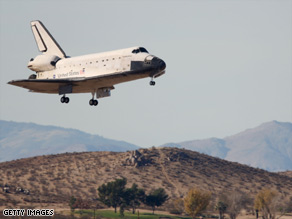
Endeavour glides in for a landing Sunday at California’s Edwards Air Force Base.
The shuttle, steered by commander Christopher Ferguson, landed at 1:25 p.m., ending a mission that lasted more than two weeks.
Wind, rain and reports of thunderstorms within 30 miles of the shuttle landing facility at Florida’s Kennedy Space Center prompted NASA to cancel the landing attempts there. Those had been scheduled for 1:19 p.m. and 2:54 p.m. ET.
After determining Monday’s weather forecast at Kennedy Space Center was equally unpromising, flight controllers decided they would try to land the shuttle and its seven astronauts at Edwards AFB, about 100 miles from Los Angeles, California, where Sunday’s forecast was sunny.
Flight controllers prefer landings at Kennedy Space Center because of cost and schedule. NASA has estimated it costs about $1.7 million to bring a shuttle home to Kennedy Space Center from California. ![]() Watch Endeavour’s Sunday landing in California »
Watch Endeavour’s Sunday landing in California »
It also takes at least a week to get the shuttle ready for the trip, but schedule is not a major factor for the Endeavour; it is not scheduled to fly again until May.
Endeavour‘s 15-day mission to the international space station began on November 14 and included four spacewalks.
During that time, the crew brought key pieces — including exercise equipment, more sleeping berths and a urine recycling system — for a project to double the capacity of the station from three in-house astronauts to six.
The recycling system was installed to turn urine and sweat from the astronauts into drinking water.
Other modules are scheduled to arrive on a February shuttle flight. The goal of expanding the station’s capacity to six astronauts is expected to be reached by the summer.
The crew also worked on a joint that helps generate power for the space station. Heidemarie Stefanyshyn-Piper and Steve Bowen spent hours cleaning and lubricating the Solar Alpha Rotary Joint, which is designed to allow the solar panels on the left side of the station to rotate and track the sun.
The astronauts also removed and replaced several trundle bearing assemblies.
The mission went according to plan, despite a minor interruption on the first spacewalk when a grease gun in Stefanyshyn-Piper tool’s bag leaked, coating everything inside with a film of lubricant. While she was trying to clean it up, the bag — with $100,000 in tools — floated away.
CNN’s Kate Tobin and Miles O’Brien contributed to this report.
All About Space Shuttle Endeavour • NASA • Kennedy Space Center
WASHINGTON (CNN) — NASA’s launch of the Mars Science Laboratory — hampered by technical difficulties and cost overruns — has been delayed until the fall of 2011, NASA officials said at a news conference Thursday in Washington.
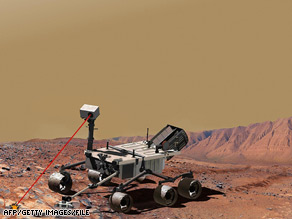
A photo illustration of a laser-equipped vehicle that is set to be part of the Mars Science Laboratory.
The mission had been scheduled for launch in the fall of 2009.
The Mars Science Lab is a large, nuclear-powered rover designed to traverse long distances with a suite of onboard scientific instruments aboard.
It is, according to NASA’s Web site, part of a “long-term effort of robotic exploration” established to “study the early environmental history of Mars” and assess whether Mars has ever been — or still is — able to sustain life.
The delay of the launch, according to NASA, is due to a number of “testing and hardware challenges that must (still) be addressed to ensure mission success.”
“The progress in recent weeks has not come fast enough on solving technical challenges and pulling hardware together,” said Charles Elachi, director of NASA’s Jet Propulsion Laboratory in Pasadena, California.
Changing to a 2011 launch “will allow for careful resolution of any remaining technical problems, proper and thorough testing, and avoid a mad dash to launch,” argued NASA Associate Administrator Ed Weiler.
The overall cost of the Mars Science Lab is now projected to be roughly $2.1 billion, according to NASA spokesman Dwayne Browne. The project originally carried a price tag of $1.6 billion.
NASA’s entire budget for the current fiscal year, according to Browne, is approximately $15 billion.
According to NASA, the Mars rover will use new technologies and be engineered to explore greater distances over rougher terrain than previous missions to the planet. This will be done in part by employing a new surface propulsion system.
“Failure is not an option on this mission,” Weiler said. “The science is too important and the investment of American taxpayer dollars compels us to be absolutely certain that we have done everything possible to ensure the success of this flagship planetary mission.”
Weiler asserted that, based on the agency’s preliminary evaluations, additional costs tied to the delay of the Science Lab launch would not result in the cancellation of other NASA programs over the next two years. He did, however, concede that it would result in other unspecified program delays.
Critics have charged that the delay and cost overruns associated with the Mars Science Lab are indicative of an agency that is plagued by a lack of accountability and inefficiency in terms of its management of both time and taxpayer dollars.
“The Mars Science Laboratory is only the latest symptom of a NASA culture that has lost control of spending,” wrote Alan Stern, a former NASA associate administrator, in a November 24 op-ed in the New York Times. “A cancer is overtaking our space agency: the routine acquiescence to immense cost increases in projects.”
Stern charged that the agency’s cost overruns are being fueled by “managers who disguise the size of cost increases that missions incur” and “members of Congress who accept steep increases to protect local jobs.”
Browne replied in a written statement saying that NASA administrators are “constantly working to improve (the agency’s) cost-estimating capabilities. … We continually review our projects to understand the true risk in terms of performance, cost and schedule.”
“The fact of life at NASA, where we are charged with creating first-of-a-kind missions of scientific discovery, is that estimating the costs of … science can be almost as difficult as actually doing the science,” Browne said.
NASA’s most recent Mars project — the mission of the Phoenix Mars Lander — came to an end last month after the solar-powered vehicle’s batteries ran down as the result of a dust storm and the onset of Martian winter. It had operated two months beyond its initial three-month mission.
NASA officials had landed the vehicle on an arctic plain after satellite observations indicated there were vast quantities of frozen water in that area, most likely in the form of permafrost. They thought such a location would be a promising place to look for organic chemicals that would signal a habitable environment.
Scientists were able to verify the presence of water-ice in the Martian subsurface, find small concentrations of salts that could be nutrients for life, and observe snow descending from the clouds, NASA said Thursday.
All About Mars Exploration • NASA
Don't Miss
CNN — At the far southwestern tip of England, dangling into the Atlantic, the remote region of Cornwall rarely feels
Editor’s Note: US Rep. Barbara Lee is a Democrat representing California’s 12th congressional district. She was the only member of

